
- Custom Software Development
- AI & ML
- Cloud Solutions
- SaaS
- Real-Time Solution
- Platform Development
SaaS route planning software development to accommodate the growing delivery volumes. Integration of ML algorithms for real-time traffic data analysis and automated route optimization. Incorporating fleet management features to track driver performance and ensure real-time oversight of vehicle locations for better visibility.
client
NDA Protected
Sweden
60 employees
A medium-sized transportation provider specializing in local and regional transportation faced a lack of resources to handle the ever-growing number of deliveries. The company manages a varied fleet, including trucks, vans, and drivers, serving e-commerce platforms and retail brands. As they grew, they required a more efficient, automated, and scalable solution for optimizing route planning and managing their fleet.
request background
SaaS Routing Software with Real-Time Fleet Management Capabilities
Our client had been managing its logistics and fleet operations with minimal software, which led to increasing inefficiencies as the business grew. Over time, their delivery volume expanded significantly, but the lack of a sophisticated route optimization system started to severely impact operations.
Without the proper tools that could accommodate expansion, their fleet management resulted in delays, higher fuel costs, and underutilized resources. This inefficiency blocked the way to scale and compete in a saturated market that demands fast, reliable deliveries.
Plus, the absence of real-time data and tracking capabilities made it difficult to make informed decisions on the fly. With customer expectations rising, the client recognized the need for a more robust technological solution.
Thus, the company addressed its challenges to Acropolium, requesting a SaaS route optimization software development to streamline operations, reduce costs, and enhance fleet performance.
challenge
A SaaS Route Planning Tool to Deal with Manual Process Errors
First off, the company faced multiple challenges due to outdated and inefficient systems. Manual route planning was a major issue, with routes being calculated through time-consuming processes that often led to errors. These inefficiencies resulted in higher fuel usage, longer delivery times, and increased operational costs.
Our client also lacked the ability to factor in critical data from the roads and weather conditions. Since drivers couldn’t adapt routes on the go, it often led to missing delivery windows and hence affected customer satisfaction.
Fleet scalability was one of the foremost challenges. As the company evolved, its minimal software tools couldn’t handle the increasing complexity of managing a larger fleet. Poor visibility into fleet operations also made it difficult for managers to track vehicles, monitor driver performance, or respond to issues in real-time.
At some point, it became impossible to gain meaningful insights from the data. With all the roadblocks in mind, we set the goal to develop SaaS software for route planning as a centralized, automated system.
goals
- Automate and improve route planning by using machine learning to analyze both historical and real-time data.
- Generate optimal delivery routes that minimize manual errors.
- Continuously refine route efficiency through machine learning algorithms to reduce travel time and fuel consumption.
- Utilize cloud computing to create scalable SaaS software for route optimization capable of handling increasing data volumes and operational complexity with time.
- Enable real-time integration of critical data to allow dynamic adjustments to delivery routes.
- Improve fleet visibility and control through a centralized cloud-based platform that tracks vehicle locations, driver performance, and load statuses in real-time.
- Provide accurate delivery estimates and reduce delays to boost customer satisfaction and strengthen the company’s reputation.
solution
SaaS Route Optimization Software Built with ML & Cloud Best Practices
Amazon Web Services (AWS), TensorFlow, Google Maps API, WebSockets, OpenStreetMap, MongoDB, PostgreSQL, Docker and Kubernetes, Node.js, GraphQL, React.js, OAuth 2.0
21 months
7 specialists
We began the project by conducting an in-depth discovery phase to thoroughly understand the client’s operations, challenges, and future goals.
This comprehensive assessment allowed us to identify key areas where improvements were necessary and provided the foundation for building a tailored solution. Based on these findings, we tailored SaaS route planning and optimization software.
To power the system, we utilized Amazon Web Services (AWS), ensuring the infrastructure is scalable and able to handle increasing data loads as the business grows. Our developers integrated TensorFlow for machine learning, allowing the platform to analyze both historical and real-time data, improving routes automatically. For real-time data integration, we employed Google Maps API and OpenStreetMap, offering precise traffic and location data to update the routes based on real-world conditions.
The backend is built with Node.js, leveraging GraphQL for efficient communication between the client and server, enabling faster queries and data management. Additionally, we used WebSockets to facilitate real-time updates between the fleet and central management, ensuring instantaneous adjustments to routes.
On the data management side, our team employed MongoDB to store unstructured data like driver logs. Simultaneously, PostgreSQL with PostGIS would handle structured and geospatial queries, enhancing route calculations and fleet tracking.
For containerization and seamless scalability, we implemented Docker and Kubernetes, allowing the application to manage fluctuating workloads effectively. Finally, OAuth 2.0 is integrated for secure user authentication, ensuring data privacy and protecting user accounts.
Ultimately, the SaaS software for route planning now offers several key features:
- Automated route planning powered by machine learning algorithms that continuously improve based on performance data.
- Real-time data integration from traffic, weather, and other sources to enable prompt adjustments to routes.
- Scalability through cloud infrastructure, allowing seamless expansion as the business grows.
- Centralized fleet visibility, offering real-time tracking of vehicle locations, driver performance, and delivery statuses.
- Comprehensive reporting and analytics, helping fleet managers make data-driven decisions to enhance operational efficiency.
outcome
Streamlined Logistics with Tailored SaaS Routing Software
- The client experienced a 15% boost in profit margins, driven by reduced fuel consumption, lower operational costs, and overall efficiency improvements.
- Customer retention increased by 25% thanks to more accurate delivery estimates and reliable service, enhanced by real-time data integration and dynamic route adjustments.
- The company saw a 25% improvement in logistics efficiency, with smoother coordination of delivery schedules, real-time vehicle tracking, and optimized resource allocation.
Related cases
Articles you may also like

Digital twins of the warehouse and production line: modeling, telemetry and payback KPIs
![AI in Warehouse Management: [Benefits & Use Cases]](/img/articles/ai-in-warehouse-management/img01.jpg)
Why & How to Employ AI in Warehouse Management: Applications & Success Cases
![IoT for Supply Chain Businesses: [6 Use Cases Included]](/img/articles/iot-for-supply-chain-management/img01.jpg)
IoT for Supply Chain Management: Use Cases, Benefits & Real Examples

Embracing IoT in Transportation and Logistics to Boost Supply Chain Visibility
![ᐉ Airport Operations Management Solftware [2025 Guide]](/img/articles/airport-operations-management/img01.jpg)
Airport Operations Management Software to Modernize Your Business in 2025
![ᐉ Big Data in Logistics: Key Benefits [5 Real Use Cases]](/img/articles/big-data-in-logistics/img01.jpg)
Big Data in Logistics: Key Benefits & 5 Real Use Cases
![AI Route Planning in 2025: [Use Cases & Benefits]](/img/articles/ai-route-planning/img01.jpg)
AI Route Planning: Must-Have Automation & Optimization Practices in 2025
![ᐉ Mapbox vs. Google Maps [Choosing a Map API]](/img/articles/map-api/img01.jpg)
Mapbox vs. Google Maps: Choosing a Map API
![Machine Learning in Logistics and Supply Chain [7 Use Cases Included]](/img/articles/machine-learning-in-supply-chain-and-logistics/img01.jpg)
Adopting Machine Learning in Supply Chain and Logistics for Successful Automation
![Transport App Development [A 2025 Guide for Startups & Businesses]](/img/articles/transportation-app-development-guide/img01.jpg)
Transportation App Development Guide for Businesses: Benefits, Features & Case Studies
![ᐉ Blockchain in Logistics [Key Benefits & Real-Life Use Cases]](/img/articles/blockchain-implementation-in-logistics/img01.jpg)
Blockchain in Logistics: Key Benefits & Real-Life Use Cases
![Blockchain for Supply Chain Management: [Benefits & Use Cases]](/img/articles/why-and-how-to-employ-blockchain-in-supply-chain-management-tips-and-success-stories/img01.jpg)
Why and How to Employ Blockchain in Supply Chain Management (Tips & Success Stories)
![Generative AI in Supply Chain Management: [Use Cases & Solutions]](/img/articles/generative-ai-supply-chain-solutions/img01.jpg)
Investing in Generative AI Supply Chain Solutions: Use Cases & Challenges for 2025
![Predictive Analytics for Supply Chains in 2025: [Benefits & Applications]](/img/articles/predictive-analytics-in-supply-chains/img01.jpg)
Why Use Predictive Analytics in Supply Chains? Advantages, Use Cases & Solutions

Top Logistics Technology Trends Reshaping the Industry in 2025
![Fleet Fuel Management System [Complete Guide]](/img/articles/build-a-fuel-management-system/img01.jpg)
How to Build a Fleet Fuel Management System [Complete Guide]
![A Sustainability Transportation Guide: [Best Practices & Use Cases]](/img/articles/sustainable-transportation-practices/img01.jpg)
Sustainable Transportation Practices: Why Invest in Renewable Energy in 2025
![ᐉ Logistics Customer Portal Development: [2025 Guide]](/img/articles/logistics-customer-portal-development/img01.jpg)
Logistics Customer Portal Development: Step-by-Step Guide
![Transportation Telematics System: [Benefits, Challenges & Use Cases]](/img/articles/the-power-of-telematic-systems-in-transportation-benefits-challenges-and-use-cases/img01.jpg)
The Power of Telematic Systems in Transportation: Benefits, Challenges & Use Cases
![ᐉ Uber API Integration: [Step-by-Step Guide & Use Cases]](/img/articles/how-to-integrate-uber-api/img01.jpg)
Uber API Integration: A Complete Guide with 7 Benefits & Examples
![Big Data in Supply Chain: [9 Real Use Cases Included]](/img/articles/big-data-in-supply-chain-real-world-use-cases-and-success-stories/img01.jpg)
Big Data in Supply Chain: Real-World Use Cases and Success Stories
![6 Use Cases of AI in Transportation and Logistics: [2025 Edition]](/img/articles/ai-in-transportation/img01.jpg)
Use Cases of AI in Transportation & Logistics: Are They Relevant for Your Business?
![IoT in Fleet Management: [Use Cases, Trends & Case Studies]](/img/articles/employing-iot-for-fleet-management-benefits-use-cases-and-success-stories/img01.jpg)
Employing IoT for Fleet Management: Benefits, Use Cases & Success Stories
![Last-Mile Delivery Optimization: [Key Strategies in 2025]](/img/articles/last-mile-delivery-solutions-optimize-logistics-for-better-customer-satisfaction/img01.jpg)
Last-mile Delivery Solutions: Optimize Logistics for Better Customer Satisfaction
![Load Planning Software: [Features, Types and Benefits]](/img/articles/load-planning-software-features-types-and-benefits/img01.jpg)
Load Planning Software: Features, Types and Benefits
How to Develop a GPS Tracking Software for Real-time Vehicle Tracking
![Best Trucking Software in 2025: [Custom or Off-The-Shelf]](/img/articles/best-trucking-software-to-consider-custom-vs-off-the-shelf/img01.jpg)
Best Trucking Software to Consider in 2025: Custom vs Off-the-Shelf
![Multi-Carrier Shipping Software: [8 Use Cases & Key Benefits]](/img/articles/multi-carrier-shipping-software-a-guide-to-enhancing-shipping-efficiency/img01.jpg)
Multi-Carrier Shipping Software: a Guide to Enhancing Shipping Efficiency

How to Build Custom Fleet Management and Maintenance Software
![Transportation Management Software Development [2025 Guide]](/img/articles/transportation-software/img01.jpg)
Transportation Management Software Development — A Detailed Overview
![How to choose the Best Transportation Management Software [2025 Guide]](/img/articles/best-transportation-management-software/img01.jpg)
How to Choose the Best Transportation Management Software: Custom vs. Off-the-Shelf
![Warehouse Automation Systems [8 Benefits for Your Business]](/img/articles/warehouse-automation-systems/img01.jpeg)
Warehouse Automation Systems: Technologies Taking Warehousing to the Next Level

How to develop a logistics document management system (case study included)

3PL Warehouse Management System: Why Choose a Custom SaaS WMS for Your Warehouse
![Supply Chain Analytics Software [Key Features & Use Cases]](/img/articles/supply-chain-analytics-software/img01.jpg)
Employing Supply Chain Analytics Software for Efficient Workflows — Key Features & Use Cases
![The Best Route Optimization Software to Employ in [2025]](/img/articles/route-optimization-software/img01.jpg)
Custom vs. Off-the-Shelf Route Optimization Software: Which Serves You Best?
![Logistics & Shipping APIs Integration Guide [2025]](/img/articles/logistics-and-shipping-apis/img01.jpg)
A Guide to Integrating Logistics and Shipping APIs to Optimize Your Supply Chain Business
![Best Truck Dispatching Software to Consider in [2025]](/img/articles/best-trucking-dispatching-software/img01.jpg)
Best Trucking Dispatching Software in 2025: Custom vs Off-the-Shelf
![Cloud Computing in Logistics and Supply Chain [2025 Guide]](/img/articles/cloud-computing-in-logistics-and-supply-chain/img01.jpg)
Cloud Computing in Logistics and Supply Chain: Use Cases Included
![ᐉ Warehouse Management Systems Development [2025 Guide]](/img/articles/warehouse-management-systems/img01.jpg)
Warehouse Management Systems Development: Empowering Real-Time Tracking and Visibility

Chatbots in Logistics & Transportation: Benefits & Use Cases

Logistics & Transportation Software Modernization: Best Practices and Lessons Learned

How Software for Freight Brokers Increases Business Efficiency and Profitability: Real-World Examples

Logistics App Development: Building a Product That Will Help Your Business
![Logistics Management System [2025 Guide]: Use Cases Included](/img/articles/logistics-management-system/img01.jpg)
Why A Logistics Management System Is A Must For Successful Supply Chain Operations

Supply Chain Management Software System: Its Features, Benefits, and How to Integrate a Suitable One

How to Turn Custom Freight Forwarding Software to Your Advantage
![Shipping Management System Development ☑️ [2025 Guide]](/img/articles/shipping-management-system/img01.jpg)
How to Automate the Shipping Process with a Shipping Management System

Guide of How to Integrate e-AWB for a Freight Forwarder

Why It Pays to Build Dispatch Management Software

How to Build Vehicle Routing Software to Earn More and Drive Less?

EDI in Logistics: How to Develop EDI Software to Make an E-Switch?









